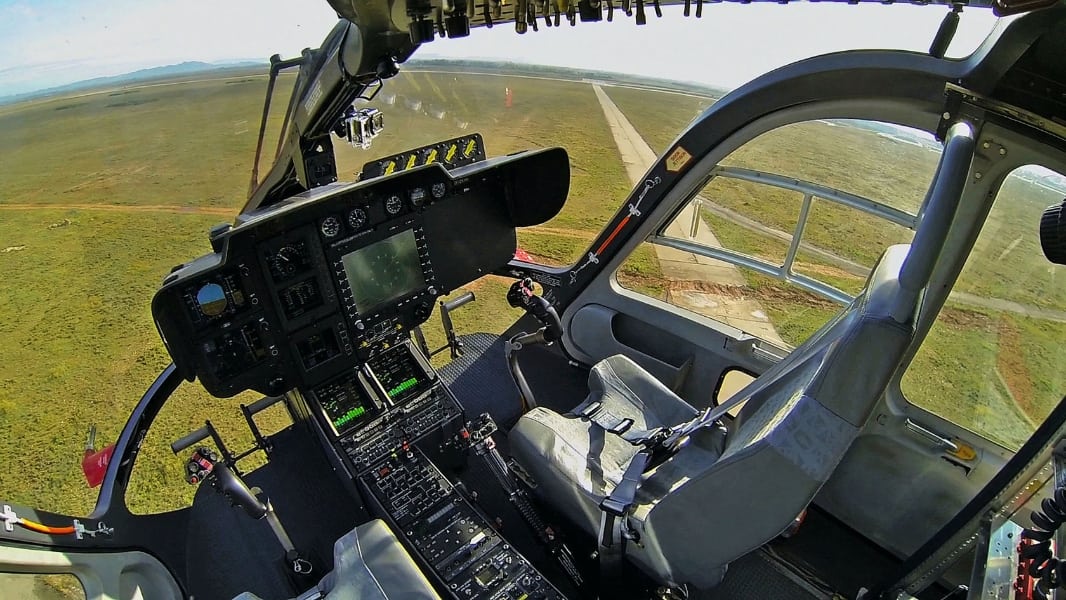[Avionics Magazine 05-11-2016] Wind River recently announced its VxWorks 653 Real Time Operating System (RTOS) platform is powering the multi-function display, flight management and autopilot for Airbus Helicopters’ Helionix avionics suite. Avionics Magazine recently caught up with Chip Downing, senior director of aerospace and defense at Wind River, to discuss the role of VxWorks 653 for Helionix, as well as how the company is continuing to improve on the original platform, which has been used in more than 350 programs on more than 75 aircraft.
 |
| Airbus Helicopters Helionix advanced avionics cockpit. Photo: Airbus Helicopters. |
Airbus Helicopters made the first major public unveiling of its next generation Helionix Integrated Modular Avionics (IMA) package on the H160 helicopter at Heli Expo 2015, featuring a Flight Management System (FMS) and GPS provided by Esterline CMC. Helionix, featuring VxWorks 653, is also used on the certified Airbus H175 and H145 civilian rotorcraft platforms. According to Downing though, WindRiver is still working on expanding the capabilities of VxWorks 653.
“The vast majority of VxWorks 653 2.x implementations have used Power architecture processors, with a few using [Advanced RISC Machine] ARM and Intel. VxWorks 653 3.x will be first implemented on a NXP T2080 multi-core processor, but we have also an Intel port under way, targeting multi-core Intel Broadwell and Core i7 processors. In addition, we have an multi-core ARM solution targeting an IEC 61508 certification environments, so we will very soon have a rich selection of supported processors for our certification solutions,” Downing told Avionics Magazine.
VxWorks 653 is compliant with the ARINC 653 avionics application software standard interface, which serves a definitive standard interface between avionics application software and RTOS. The use of ARINC 653 allows avionics vendors and hosted function suppliers to deploy multiple applications onto a sing multi-core enabled hardware platform while meeting system compliance standards such as DO-178C, DO-254 and DO-297.
Wind River does not disclose customer version numbers for VxWorks 653, so Downing was not able to say what version of VxWorks 653 — the 2.5 or the 3.0 multicore — is in use on the Airbus Helionix IMA suite. However, he did explain how 653’s partitioning capabilities allow multiple independent applications of different safety criticality levels to run on a single platform. Not only does this provide major RTOS capabilities in-flight, it also can help systems integrators save development costs when producing a new cockpit avionics package or when developing a retrofit solution.
“Wind River enables multiple independent applications of different safety criticality levels to run on a single target platform by using a method called robust partitioning, which proves that a failure in one partition will not affect the execution of applications in other partitions. This same robust partitioning analysis also enables the insertion of new capabilities into a VxWorks 653 environment without forcing a re-test of the entire platform — only the scope of the changed software needs to be tested. This saves millions of dollars for large commercial aircraft and reduces the risk and the time to re-certify a platform,” said Downing.
VxWorks 653 is configured using standard XML, and Wind River provides an XML compiler that is qualified as a development tool under DO-178B and DO-178C guidance. This tool qualification vastly reduces the testing required to change XML configurations, according to Downing. Going forward, Wind River will look to continue to improve on the versatility of VxWorks 653 as both a forward fit and retrofit solution.
“VxWorks 653 is ideal for both new, forward fit solutions and retrofits. We have improved this capability in VxWorks 653 3.x with a full-featured, certification-ready hypervisor that leverages hardware virtualization capabilities in microprocessor silicon, which then enables the virtualization for full OS environments like Windows and Linux. This makes porting software from legacy environments or lab environments much easier. Using our robust partitioning capabilities these larger, harder-to-certify OS partitions can be separated from flight-critical applications that demand a higher Design Assurance Level (DAL) for operations,” said Downing.